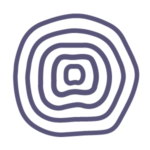A mindset of openness, vulnerability, humility and growth is foundational to the work of social innovation. Being curious about the problem, curious about the people involved and curious about your own assumptions is the capability that helps us see new ways forward. Not only that, being able to inspire a mindset of curiosity in others is a key role when working in community.
The ideas and stories captured here were shared by members of the Regional Innovators Network (RIN) during a peer learning session on date.
Quick Summary
What does it mean?
- Not taking anything for granted
- Understanding ‘why’
- Discovering the core of an issue
What helps?
- General tips:
- Recognising that curiosity is a tool
- Human to human connection
- Biggest tip: You can’t have curiosity without vulnerability
- Creating safe spaces for people to be vulnerable
- Place-specific or culturally specific learning
- Nurturing your own curiosity:
- Accepting the journey
- Did I really listen…?
- Continuous Learning
- How to spark curiosity within the community:
- Do something different and unexpected
- Genuine interest!
- Demonstrating that you’ve listened
- How to nurture curiosity among stakeholders:
- Illuminate the gaps with real evidence
- Adding value
What hinders?
- Being insensitive, triggering defensiveness
- When you’re just not that interested
- Being part of the furniture
What does it mean
Working in community with people we have known for years, it is common for us to build assumptions about the state of play, get stuck in habits about how we listen (or don’t listen) and develop expectations about what works and what doesn’t. Building a mindset of curiosity and continuous learning is about deliberately breaking these habits in order to make new responses possible. This is what it means to innovate and create new futures: to see one another differently, to see a community’s future differently, and to take different actions – actions no one ever thought we would take.
Not taking anything for granted
Finding solutions to complex challenges requires something other than ‘business as usual’. Innovation is about new action, but to be effective, these actions need to be based on evidence. We acquire this evidence through research: being curious and learning as much as we can from anyone involved in the situation. We check to see what is working and why, and what’s not working. We also work to create habits in noticing our assumptions and looking to see whether or not our assumptions still hold.
Understanding ‘why’
Being curious means to ask ‘why’ from the very beginning of a project and to be committed to understanding what’s happening. This process can include:
- Undertaking discovery work in the community, having open conversations with people and listening to their perceptions and experiences
- Making a list of your own assumptions. What has created these assumptions? Are they useful, truthful or relevant? Are they risky?
- Understanding the perspectives of stakeholders, including their ideas for solutions, perceived barriers, and assumptions
- Continuing to check your assumptions throughout the process
- Looking to understand root causes
- Identifying what’s holding the current situation in place – thinking in systems
Discovering the core of an issue
The early discovery phases of a project are a chance to shape the purpose of a project. It’s a time for gathering multiple views of the issue and multiple suggestions of possible solutions.
In the following video, Shane explains the challenge of working with stakeholders who enter the discovery phase with a predetermined outcome in mind.
What helps
General tips:
- Recognising that curiosity is a tool. Participants identified three main opportunities for curiosity:
- Being curious ourselves
- Encouraging curiosity in the community about our work
- Engaging the curiosity of stakeholders
- Human to human connection. Being curious is a way of establishing trust and building relationships. Having natural conversations with people about what’s important to them is a way of breaking down the preconceived idea people might have of you and who you represent. It’s important to gain trust by being authentic.
It’s important to understand that we cannot be curious without being vulnerable and open. “Curiosity requires vulnerability and openness. The ‘expert’ hat needs to shift to a different group.” – Shane
Therefore, in order to enable curiosity among community and stakeholders, we have to create the conditions in which people can be vulnerable.
Biggest tip: You can’t have curiosity without vulnerability
In the following video Michelle introduces us to Brenè Brown’s TED talk on what it really means to be vulnerable.
- Creating safe spaces for people to be vulnerable. In small communities, history between stakeholders can be a barrier. If you are organising a group session which will require a level of vulnerability from all attendees, people need to know it will be ok to let their guard down. Participants mentioned some key ways to create the conditions for vulnerability, openness and curiosity:
- Establish your team’s facilitation frameworks and goals for the project. Keep the big picture top of mind.
- Lay the groundwork with potentially vulnerable attendees in advance to let them be heard, and encourage them to see the big picture of the work being done. Reassure them that you are aware of the existing tensions and will be mindful of this in the session.
- Establish some rules of agreement for the session to create a respectful space where everyone agrees to let others speak.
- Look forward towards solutions and not back towards past tensions.
- Find ways, even little ways, to enable stakeholders to be curious about one another. Icebreakers where people get to know one another in some small way is a good example.
- Place-specific or culturally specific learning. Part of laying the foundations for an initiative is understanding the cultural norms of the group you are working with. This could be cultural (a refugee group for example) or organisational (there are many organisational cultures where it is not common show vulnerability). If you find you need extra resources to support a group to be vulnerable, look at the information or resources the group may already have available, and leverage those. Speaking to people with local or organisational knowledge can provide vital insight into the dynamics you are working with.
Nurturing your own curiosity
- Accepting the journey. Take a ‘prototyping’ mind set. Be willing to step in and have a go, rather than being nervous about asking the hard questions and being nervous about what answers people might have. Start somewhere.
“I like that we don’t have to be the experts, we can take the journey, I find that very freeing. And I like that it’s ok to not know.” – Sharon
- Did I really listen…? Curiosity requires the capacity to truly hear someone. Not just nodding and being in the room, but actually hear what people are trying to say. One self-reflection habit is to check to see if you’ve really listened.
- Continuous Learning. Continuous learning means not being stuck on your old track. Include people in your life who challenge your status quo. Participants identified professional supervision as a very pragmatic way to continuously learn. Continuous learning can involve self reflection, professional advice, reading books (for example participants recommended Brene Brown’s books on vulnerability and leadership) and more.
“If I’m not willing to keep learning and growing and trying new approaches, then I can’t expect that of others.” – Shane
Sparking curiosity within the community:
- Do something different and unexpected. Don’t expect the community to automatically think your work is ‘super interesting’. People may have been asked similar questions on many occasions and see no value in spending time with you. Respect people’s time and think about new ways to engage people through the type and style of questions you ask.
“Our community is so over-surveyed, so we knew we had to try a different approach to get people on board. So we had short ‘conversation starter’ type questions, rather than prescriptive survey style questions and we let people talk.” – Shane
- Genuine interest! Genuinely asking ‘what matters to you’, and being ready for any response, proves to people that your curiosity is authentic and gives them permission to be genuine in return.
- Demonstrating that you’ve listened. Once evidence has been gathered and synthesised, it helps to communicate your key takeaways back to community (in a visual way) to prove that you’ve listened and also to test if you got it right. In Shane’s example, community members were curious to see if their sentiments were being represented accurately, but also to see what others in the community had shared.
How to nurture curiosity in professional stakeholders:
- Illuminate the gaps with real evidence. Communicating key findings (gathered during the discovery phase) can be a powerful way to spark curiosity and to show professional stakeholders they might not be seeing the whole picture after all.
“Gathering the insights from community was a big learning curve, particularly for people like me who thought they knew the community quite well. And putting those key insights at the start of the report made other people in our organisation curious about what the rest of the report said. We’ve had people curious about our work and invested in it ever since.” – Shane
- Adding value. Sometimes you might have to work with a group, for example council, who might have a very different idea about what the solution should be and be quite attached to the assumptions they have around what the community needs. If you target the jugular of an entrenched idea, it tends to reinforce the idea rather than dislodge it. A better approach could be to pitch your work to people as a way of adding value to their existing work. You could ask:
“How can we help you be successful in your project? We can undertake our discovery work and provide you with some of our insights so we can establish a more holisitic picture of what the community needs to sit ALONGSIDE your proposed solution.”
What hinders
Being insensitive, triggering defensiveness
How do you ask questions without people feeling like they need to defend themselves, or that they are being personally attacked? You’ve got to be able to ask the ‘why’ questions, but ‘how’ you ask is very important. Set up your process by framing the reasons why you are interested and make sure you are coming from a place of genuine interest. Understand that the topics may be sensitive to some people.
“I think curiosity is about holding tension. I think of it like a rope, pulling on both ends and understanding where the maximum tension point is.” – Ione
“For me, curiosity is about not being satisfied with the first answer you get, or the second answer or the third answer. It’s about asking and asking until you reach the inner kernel of truth. But you need to do it somewhat gently so as not to offend people.” – Emily
When you’re just not that interested
Sometimes we have to work with people we don’t like and for organisations we have no interest in. How do you develop enough curiosity to go ahead with the project? Participants recommended turning the barrier into a challenge for yourself. Everything is interesting if you are a curious person, and there’s something to learn from every situation.
Being part of the furniture
Working in a community which you are also personally involved with can pose unique challenges. You may share sentiments around many of the stories and examples raised by community in your discovery work, but it’s important to remember that you are there to listen, not to pass judgement or put forward your own opinion.
“One of the most challenging parts of engaging with the community was for us to not to become PART of the conversation, but to remain as facilitators OF the conversation.” – Shane
Keep reading
- Brene Brown full Ted Talk on Vulnerability
- Brene Brown’s ‘Dare to Lead’ Read-along workbook
- ‘Enemies of Learning‘ – barriers to our continuous learning


